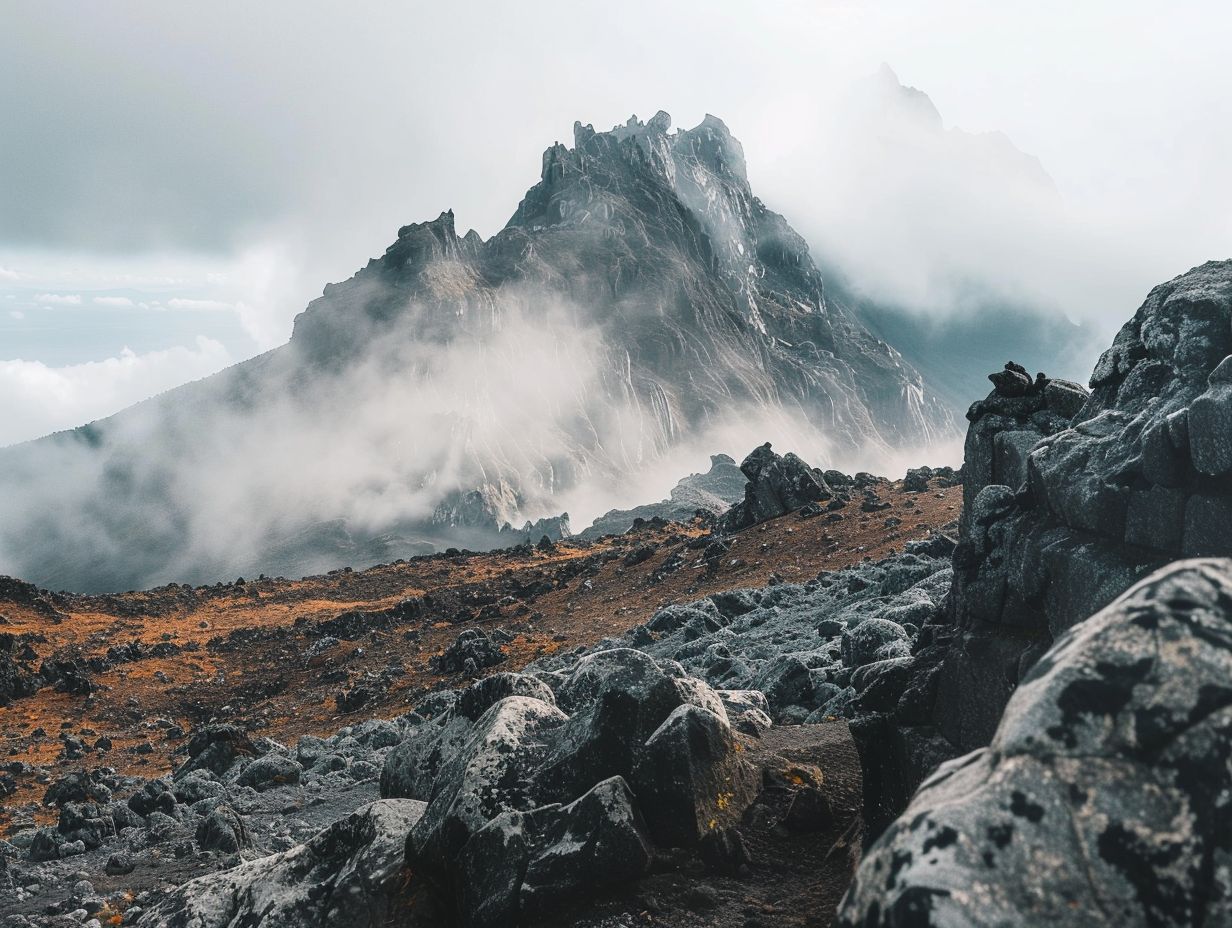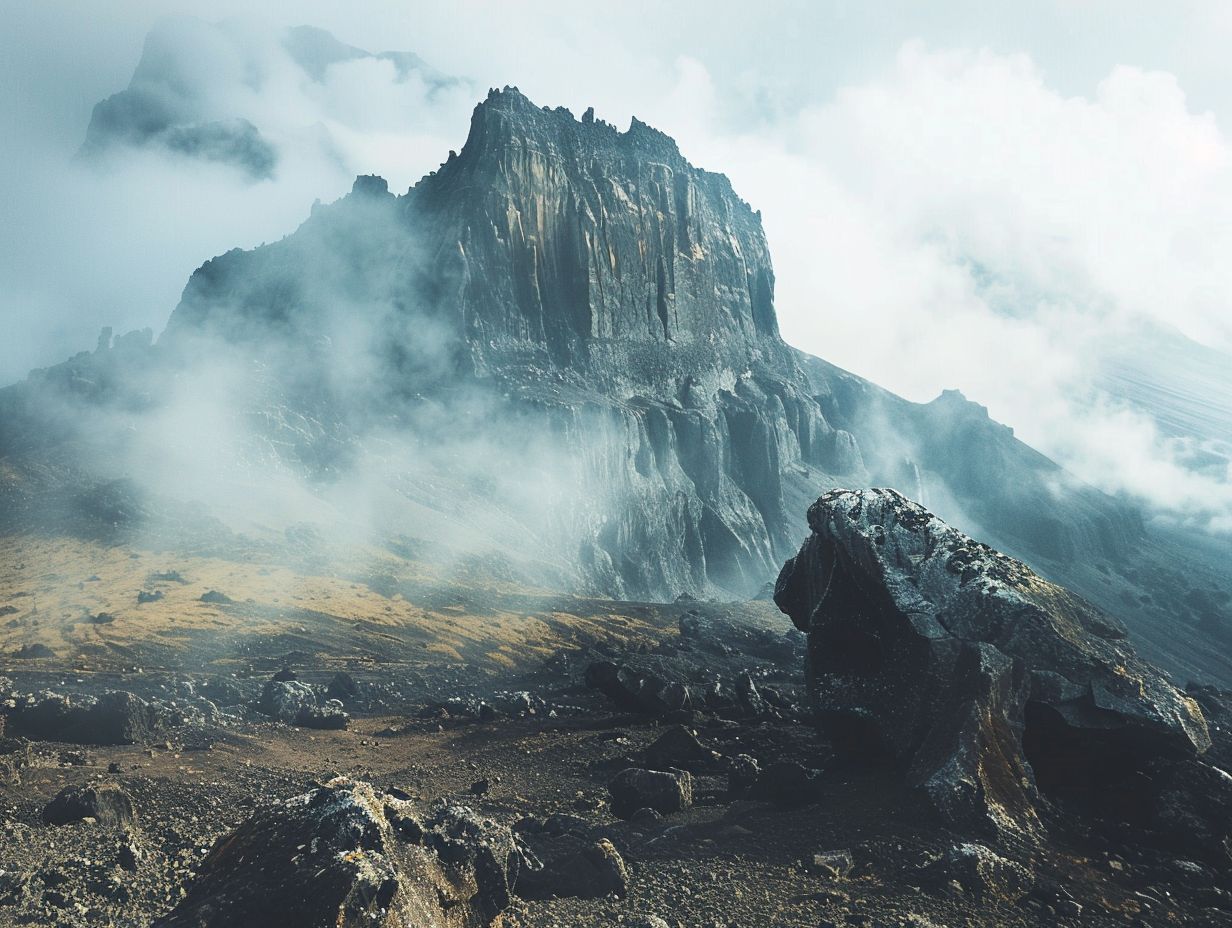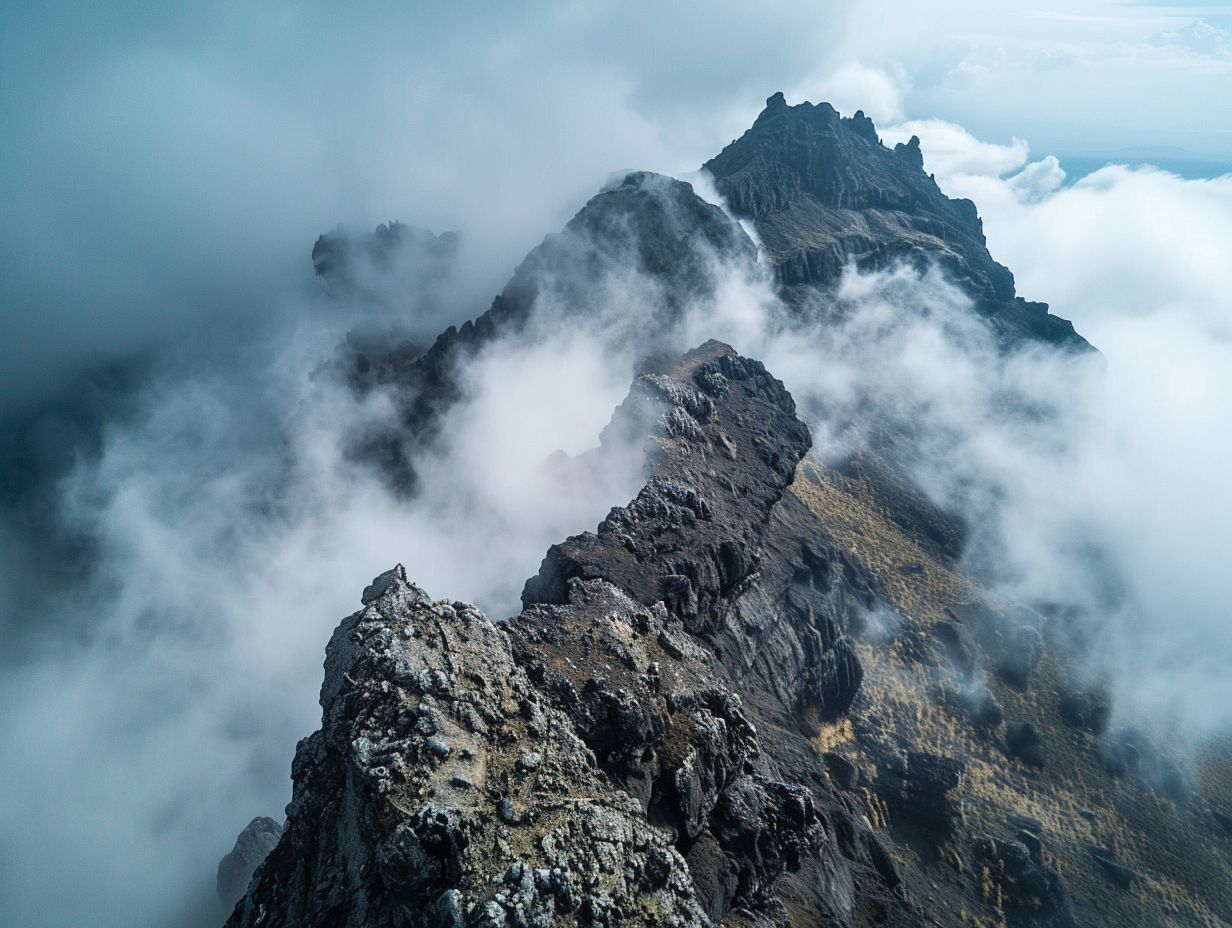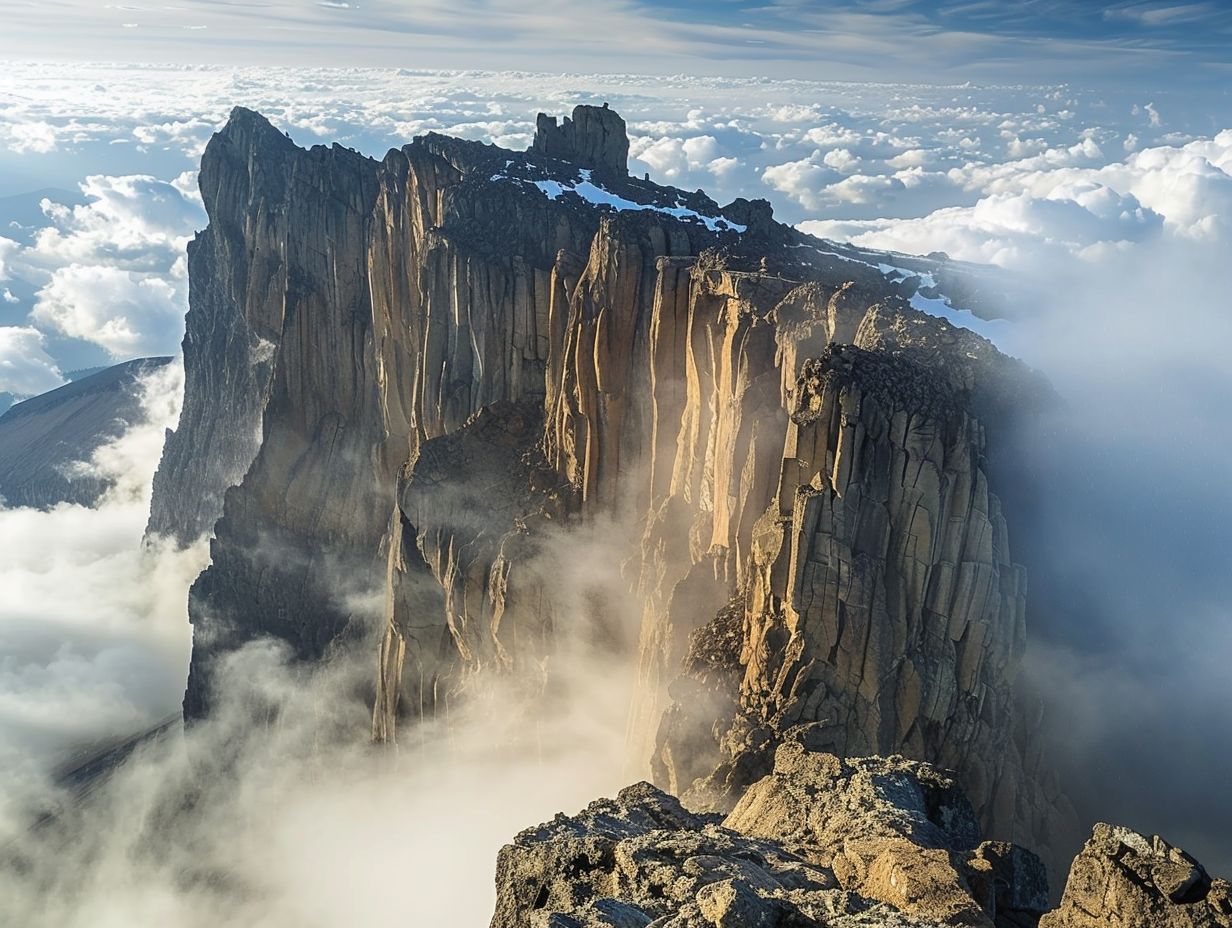
Mawenzi Peak Kilimanjaro
Are you an adventure seeker looking to conquer new heights? Look no further than Mawenzi Peak Kilimanjaro, a fascinating and challenging peak located in Tanzania.
In this article, we will explore the history of Mawenzi Peak Kilimanjaro, the first people to summit it, its height, difficulty level, best time to climb, weather conditions, crowds, routes, accommodations, safety precautions, packing essentials, and tips for a successful climb.
Get ready for an exciting journey to the top!
Key Takeaways:

- Mawenzi Peak Kilimanjaro is the second highest peak of Mount Kilimanjaro and is known for its rugged terrain and challenging climbing routes.
- Mawenzi Peak Kilimanjaro is located in Tanzania on the northeastern side of Mount Kilimanjaro, near the border of Kenya.
- The first people to summit Mawenzi Peak Kilimanjaro were German climbers in 1912, and since then it has become a popular destination for adventurous climbers.
What is Mawenzi Peak Kilimanjaro?
Mawenzi Peak Kilimanjaro is one of the three volcanic cones of Mount Kilimanjaro, the highest peak in Africa. It is known for its rugged terrain and challenging climbing routes.
Where is Mawenzi Peak Kilimanjaro located?
Mawenzi Peak Kilimanjaro is located in Tanzania, East Africa. It is part of the Kilimanjaro National Park, a UNESCO World Heritage Site.
Specifically situated in the northern part of Tanzania, Mawenzi Peak is a prominent feature of the Kilimanjaro National Park, providing a stunning backdrop to the surrounding landscapes.
This majestic peak is one of the three volcanic cones of Mount Kilimanjaro, along with Kibo and Shira. Mawenzi stands at an impressive height of approximately 5,148 meters (16,893 feet) above sea level. Its distinct rocky terrain and jagged peaks contribute to its allure, attracting adventurers and nature enthusiasts from around the globe.
What is the History of Mawenzi Peak Kilimanjaro?
The history of Mawenzi Peak Kilimanjaro is rich with tales of early climbers and geologists exploring its rocky formations. It has played a significant role in the local Chagga culture.
Early expeditions to Mawenzi Peak date back to the late 19th century, when pioneering geologists ventured into the rugged terrain to unravel its geological mysteries. These early explorations laid the foundation for the scientific understanding of the peak’s unique features and volcanic history.
The Chagga people, who have inhabited the Kilimanjaro region for centuries, regard Mawenzi Peak as a sacred part of their cultural heritage. It holds spiritual significance and is often the subject of folklore and traditional rituals within Chagga communities.
Who were the First People to Summit Mawenzi Peak Kilimanjaro?
The first people to summit Mawenzi Peak Kilimanjaro were a German team led by Hans Meyer in the late 19th century. This expedition marked a milestone in the history of mountaineering in East Africa.
The pioneering German team, under the guidance of Hans Meyer, embarked on a daring ascent of Mawenzi Peak on their expedition. Scaling the rugged terrain and facing unpredictable weather conditions, they displayed immense courage and determination. Their successful summit of Mawenzi Peak not only showcased their mountaineering prowess but also paved the way for future adventurers to explore the challenging landscape of Kilimanjaro.
By reaching the summit, Meyer and his team not only accomplished a remarkable feat but also contributed significantly to the understanding of the region’s geography and natural beauty. Their expedition remains a historical landmark in the annals of mountaineering, inspiring generations of climbers to follow in their footsteps.
What is the Height of Mawenzi Peak Kilimanjaro?
Mawenzi Peak Kilimanjaro stands at an impressive elevation of approximately 5,149 meters (16,893 feet) above sea level, making it the third-highest peak of the Mount Kilimanjaro massif.
Sitting in close proximity to Kilimanjaro’s highest summit, Uhuru Peak, which reaches an altitude of about 5,895 meters (19,341 feet), Mawenzi Peak offers a unique challenge to climbers due to its rugged terrain and sharp pinnacles.
Although it is the third tallest peak of the range, its soaring cliffs and jagged formations contribute to its reputation as one of the most difficult climbs on Kilimanjaro. Serving as a striking backdrop to the mountain’s iconic landscapes, Mawenzi’s prominence is further accentuated by its distinct appearance when viewed from various vantage points.
What is the Difficulty Level of Climbing Mawenzi Peak Kilimanjaro?

Climbing Mawenzi Peak Kilimanjaro is considered a challenging endeavor, requiring technical skills and experience due to its steep and rocky terrain. The ascent poses various dangers that demand caution and expertise.
As climbers tackle the ascent, they encounter treacherous rock formations and unpredictable weather conditions that add to the complexity of the journey. Specialized equipment such as ropes, harnesses, and crampons are essential to navigate the rugged terrain and ensure safety. One misstep on the narrow ridges or icy slopes could lead to serious injury or a fatal fall, emphasizing the need for precise movements and focus.
The expertise needed for a successful ascent goes beyond physical strength; mental resilience is equally crucial. The ability to make quick decisions under pressure and adapt to changing circumstances is paramount in the face of potential hazards. Without proper training and guidance, attempting to conquer Mawenzi Peak can quickly turn disastrous, highlighting the unforgiving nature of this challenging climb.
What is the Best Time to Climb Mawenzi Peak Kilimanjaro?
The best time to climb Mawenzi Peak Kilimanjaro is during the dry season, typically from late June to October, when the weather is more stable and the routes are less affected by rainfall.
During this period, trekkers can enjoy clearer skies and better visibility, enhancing the overall trekking experience. The dry season also brings milder temperatures, making the ascent more comfortable and manageable. With reduced chances of precipitation, hikers are less likely to encounter muddy or slippery trails, ensuring a safer journey to the peak.
What are the Weather Conditions on Mawenzi Peak Kilimanjaro?
The weather conditions on Mawenzi Peak Kilimanjaro can vary, but during the dry season, climbers can expect clear skies and mild temperatures during the day, with colder nights at higher altitudes.
In contrast, the wet season brings frequent rainfall, making the terrain slippery and challenging, especially for climbers navigating steep slopes. Storms can roll in quickly, reducing visibility and creating hazardous conditions, emphasizing the importance of proper gear and preparation.
At higher altitudes, temperatures can drop significantly, posing risks of hypothermia if not adequately protected. Snowfall is not uncommon on Mawenzi Peak, adding an additional layer of difficulty for climbers during certain times of the year.
What are the Crowds like on Mawenzi Peak Kilimanjaro?
The crowds on Mawenzi Peak Kilimanjaro can vary depending on the season and the popularity of specific routes. The Kilimanjaro National Park regulations help manage the number of climbers to ensure a safe and enjoyable experience.
During peak seasons, such as the dry months from June to October, Mawenzi Peak can witness a significant influx of climbers seeking to conquer this challenging summit. Conversely, in the rainy season, the number of climbers tends to decrease due to the harsh weather conditions. The climbing regulations set by the park authorities play a crucial role in maintaining a balance between granting access to the mountain while safeguarding the environment and ensuring the safety of climbers.
What are the Routes to Climb Mawenzi Peak Kilimanjaro?
There are several routes to climb Mawenzi Peak Kilimanjaro, each offering unique challenges and experiences. It is advisable to consult with a reputable trekking agency to select the most suitable route based on your skill level and preferences.
Mawenzi Peak, a prominent feature on the iconic Kilimanjaro, boasts routes like the Northern Circuit, Rongai, and Marangu. The Northern Circuit offers a longer, less crowded journey with gradual acclimatization, suited for those seeking a more immersive experience. On the other hand, Rongai presents a less strenuous option, ideal for beginners or those preferring a slower ascent.
The Marangu route, known as the ‘Coca-Cola’ route, provides relatively more comfort with hut accommodation, attracting climbers seeking a less rugged expedition.
What is the Most Popular Route to Climb Mawenzi Peak Kilimanjaro?
The most popular route to climb Mawenzi Peak Kilimanjaro is the Marangu route, also known as the ‘Coca-Cola‘ route. It is favored by many climbers for its gradual ascent and hut accommodations.
The huts along the Marangu route offer shelter and basic amenities for climbers during their journey. These huts provide a more comfortable and less primitive experience compared to camping.
The marked paths and well-defined trail of the Marangu route make it easier for climbers to navigate, especially during challenging conditions. As climbers make their way towards the summit, they are rewarded with stunning views of the surrounding landscape, adding to the appeal of this classic route.
What are the Other Routes to Climb Mawenzi Peak Kilimanjaro?

Apart from the Marangu route, climbers can choose from other routes like the Rongai, Shira, Lemosho, Umbwe, and Northern circuit routes, each offering distinct challenges and scenic views.
Among these routes, the Rongai route stands out for its gradual ascent from the northern side of Kilimanjaro, providing a unique perspective of the mountain. On the other hand, the Shira route offers a more challenging climb due to its higher starting point, with trekkers experiencing a quicker gain in altitude. The Lemosho route, known for its beautiful wilderness and varied landscapes, is a favorite for those seeking a more remote and less crowded experience.
The Umbwe route, in contrast, is renowned for its steep and direct approach to the summit, appealing to experienced climbers looking for a more demanding trek. The Northern circuit route, being the longest one, offers unparalleled acclimatization opportunities and the chance to see Kilimanjaro from various angles, providing trekkers with a truly immersive experience.
What are the Accommodations like on Mawenzi Peak Kilimanjaro?
Accommodations on Mawenzi Peak Kilimanjaro mainly consist of mountain huts strategically located along the climbing routes.
These huts provide shelter and basic amenities for climbers during their ascent.
With Mount Kilimanjaro being a hotspot for biodiversity, the huts on Mawenzi Peak offer a unique experience for climbers, surrounded by the diverse wildlife, lush forests, and an array of endemic plants.
These accommodations not only serve as resting points but also serve as crucial bases for acclimatization, allowing climbers to adjust to the high altitude and unpredictable weather conditions.
The huts are strategically positioned, offering breathtaking views of the surrounding landscape, motivating climbers as they push themselves towards the summit.
What are the Safety Precautions for Climbing Mawenzi Peak Kilimanjaro?

Safety precautions for climbing Mawenzi Peak Kilimanjaro include acclimatization to high altitudes, proper equipment usage, and awareness of potential dangers such as altitude sickness and extreme weather conditions.
Altitude-related risks pose a significant challenge for climbers on Mawenzi Peak, with altitude sickness being a primary concern due to the rapid gain in elevation. Without proper acclimatization, climbers can experience symptoms like headaches, nausea, and fatigue, potentially leading to more severe conditions like HAPE or HACE.
Essential equipment for this climb includes sturdy hiking boots, warm clothing layers, crampons, and a reliable headlamp for navigating in the dark. Climbers must carry enough water, high-energy snacks, and a first aid kit to address any emergencies on the mountain.
To mitigate risks, climbers are advised to obtain a climbing permit for Kilimanjaro National Park and hire experienced guides who are familiar with the terrain and weather patterns. Planning a gradual ascent, staying hydrated, and recognizing the signs of altitude sickness are crucial elements of a safe climb on Mawenzi Peak.
What are the Things to Pack for Climbing Mawenzi Peak Kilimanjaro?
When climbing Mawenzi Peak Kilimanjaro, climbers should pack essential items such as proper clothing, trekking gear, first aid kit, high-altitude medications, and sufficient water and snacks for the journey.
Proper clothing for Mawenzi Peak should include moisture-wicking base layers, insulating mid-layers, windproof and waterproof outer layers, and durable hiking boots with good ankle support. Climbers must also carry trekking poles for stability on rocky terrain and a sturdy backpack to hold their supplies. It’s vital to bring a first aid kit containing bandages, pain relievers, blister pads, antiseptic wipes, and any personal medications.
What are the Tips for a Successful Climb of Mawenzi Peak Kilimanjaro?
For a successful climb of Mawenzi Peak Kilimanjaro, experienced climbers recommend gradual acclimatization, maintaining hydration, pacing oneself, and following the guidance of experienced guides familiar with the routes.
Mawenzi Peak on Kilimanjaro is renowned for its challenging terrain, including steep gorges and rocky outcrops. Climbing ratings for this peak vary from moderate to difficult, requiring climbers to have prior experience in high-altitude treks. It is crucial for climbers to study the map of the area meticulously before embarking on the journey, as navigating through the diverse landscapes of Mawenzi can be tricky.
Experts recommend starting the climb well-rested and prepared, as the ascent can be physically demanding. One of the key acclimatization strategies is to spend enough time at intermediate altitudes to allow the body to adjust gradually to the reduced oxygen levels. Hydration is vital at high altitudes to prevent altitude sickness and ensure peak performance during the climb.
Experienced guides play a pivotal role in ensuring the safety and success of the climb. These guides possess invaluable knowledge of the routes, weather conditions, and emergency procedures. Trusting their expertise and following their instructions can significantly enhance the overall climbing experience and minimize potential risks.
Frequently Asked Questions:
1. What is Mawenzi Peak Kilimanjaro?
A: Mawenzi Peak Kilimanjaro is a volcanic peak located in Tanzania, Africa. It is the third highest peak on Mount Kilimanjaro and is known for its rugged and rocky terrain.
2. How tall is Mawenzi Peak Kilimanjaro?
A: Mawenzi Peak stands at a height of 16,893 feet (5,149 meters) above sea level.
3. Can I climb Mawenzi Peak Kilimanjaro?
A: Yes, Mawenzi Peak Kilimanjaro can be climbed as part of a larger trek up Mount Kilimanjaro. However, the ascent to Mawenzi Peak is only recommended for experienced and advanced climbers due to its difficult and technical terrain.
4. What is the best time to climb Mawenzi Peak Kilimanjaro?
A: The best time to climb Mawenzi Peak Kilimanjaro is during the dry seasons of January to March and June to October. These months offer the most stable weather conditions and lower chances of rain and snow.
5. Are there any accommodations near Mawenzi Peak Kilimanjaro?
A: Yes, there are campsites and huts available near Mawenzi Peak for climbers to rest and acclimatize. These accommodations are managed and maintained by the Kilimanjaro National Park Authority.
6. What is the difficulty level of climbing Mawenzi Peak Kilimanjaro?
A: Climbing Mawenzi Peak is considered very difficult and is only recommended for experienced climbers with high fitness levels. The terrain is steep and rocky, and the altitude poses a significant challenge. It is important to have proper training and preparation before attempting to climb Mawenzi Peak.